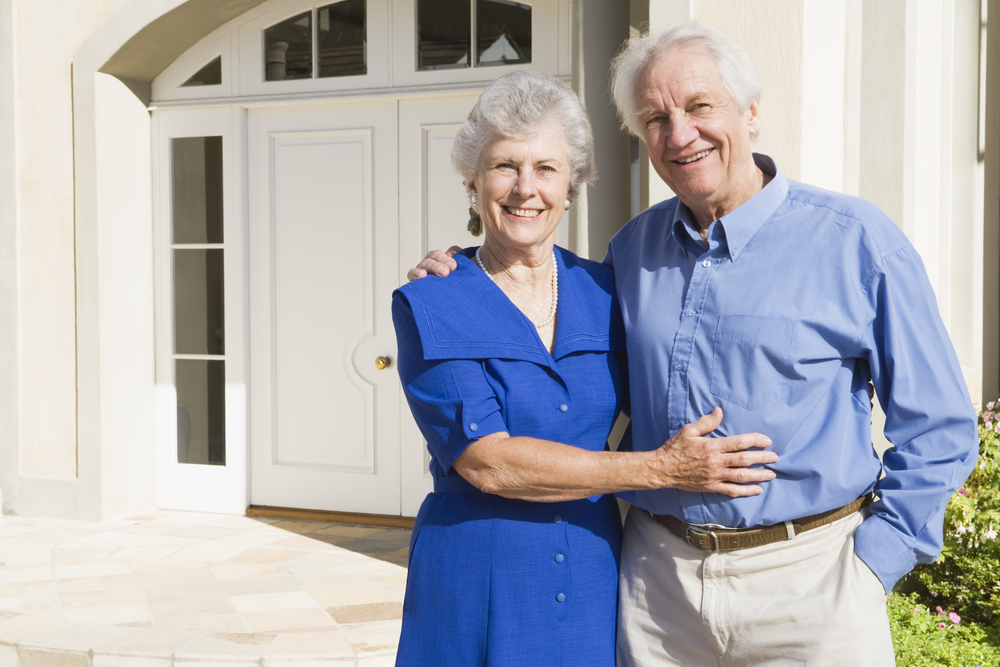Aging in place is a concept that is getting a lot of attention these days. Simply put, it refers to the movement toward keeping seniors in their own homes for as long as comfortably possible. When polled, most people say that they want to continue to stay in their own homes as they age, as opposed to senior facilities or living with their children. This shouldn’t come as a surprise. Most of us would much rather remain in our familiar, comfortable home settings, surrounded by the people and things around which our life has been constructed, rather than in senior living environments, no matter how high the quality.
The older population is aging fast and in vast numbers. Consider this data presented by the Connecticut Commission on Aging: Connecticut is the 7th oldest state in the nation for median age. We currently have over 600,000 residents over the age of 60, and one million baby boomers. From 2006 to 2030, our state’s older adult population is expected to increase by 64%.
Now consider the costs. Home-care based services are often more than 50% less than institutional care. Because a large portion of nursing home care is paid for by Medicare and Medicaid, the state could save more than $9 billion by 2025 if it moves toward re-balancing the long-term care system. Obviously, it makes sense financially to keep residents in their homes as we age.
Next, let’s look at some of the many new developments that help make it safe and comfortable to age at home. Seniors residing in their homes need to have stimulation, access to family members and other people who can offer support and assistance, as well as user-friendly means of communication.
Adult day programs provide opportunities for socialization and stimulation throughout the day, or for a few hours. They offer activities that help keep minds and hands active. Meals are served as well. For individuals who are not able to live completely independently, they are safer in the caring hands of competent professionals for most of their waking hours. They may get much needed health services such as: occupational or physical therapy and doctor visits, just to name a few. Additionally, caregivers can enjoy much needed time alone while knowing that their loved one is being well-taken care of.
Additionally, night time sitters can be hired to make sure that seniors are safe at night if they need care, or have a tendency to wander during the evening hours. One innovative program at a nursing home in Riverdale, New York, even offers an overnight program for seniors who are unable to sleep at night due to dementia disorders. They receive supervision and participate in a variety of activities while their caregivers rest. It is hoped that this type of program will be adopted by other facilities as the need continues to grow.
There is a rapidly growing field of technology designed to assist the elderly and people with special needs in their own homes. Computers and cameras can connect the individual to family, friends and caregivers via internet connections. Specially designed computers allow even technology-phobic individuals to feel confident using large-screen, simplified interfaces to skype, send email, listen to music, play games and view photo albums with a few clicks of a mouse.
Monitors and alarms of all kinds keep loved ones informed of their family members’ activities; including when and how often they get out of bed, open kitchen cabinets or use the bathroom. Tailored updates can be emailed detailing the elderly or disabled person’s actions, and alerting loved ones to possible falls, wandering, illness or other dangers.
Finally, there is a whole host of home products for independent living that are specially designed to help people overcome physical limitations. These include; talking clocks watches, and appliances, UV lights for people who aren’t exposed to enough natural light, tools that aid with wearing or fastening zippers, buttons, shoes and socks, adapted plates and utensils, portable showers, walk-in tubs, toilet lifts and much more. Entire kitchens can be adapted with cabinets that pull down, for example, and do not reduce the value of the home. Stair lifts can transport a person without risk, even if there is a curve or a landing.
And if Mom or Dad wants to live alone but needs to be close by, modular additions now exist that can be added to an existing home in about a week. They are specially equipped to be used by elderly people or those with special needs. They can be easily removed as well, so they may make sense while a person rehabilitates from an illness or injury.
In summary, there is a vast and growing need to help people stay at home throughout their later years. Communities and markets have responded with solutions for almost every problem that arises. If you have questions about how to help your aging loved one remain independent, please do not hesitate to bring it to our attention at Growing Options. There is probably nothing we haven’t heard yet, and we are eager to help you find a solution.


I read blogs on allowing elderly people live safely in their home a lot but I have
actually never been obliged to publish a comment, up until now.
Terrific short article. I took pleasure in reading it.
I have actually bookmarked your website and posted a link to this post on my
Facebook wall.
Thanks again for your quality work!